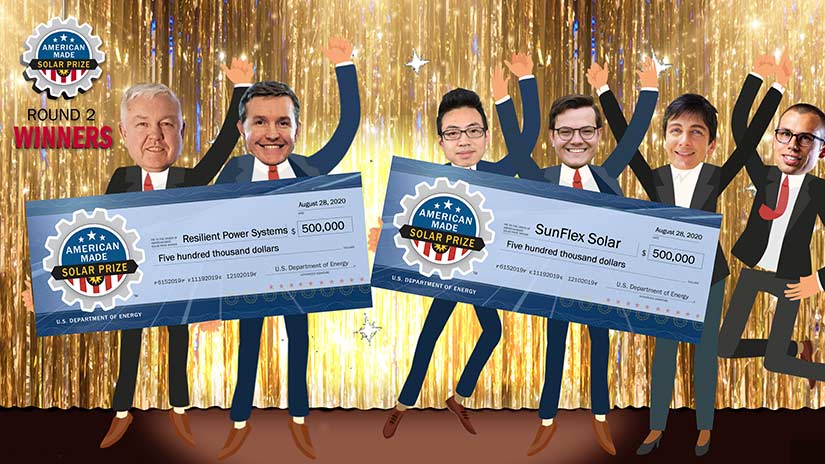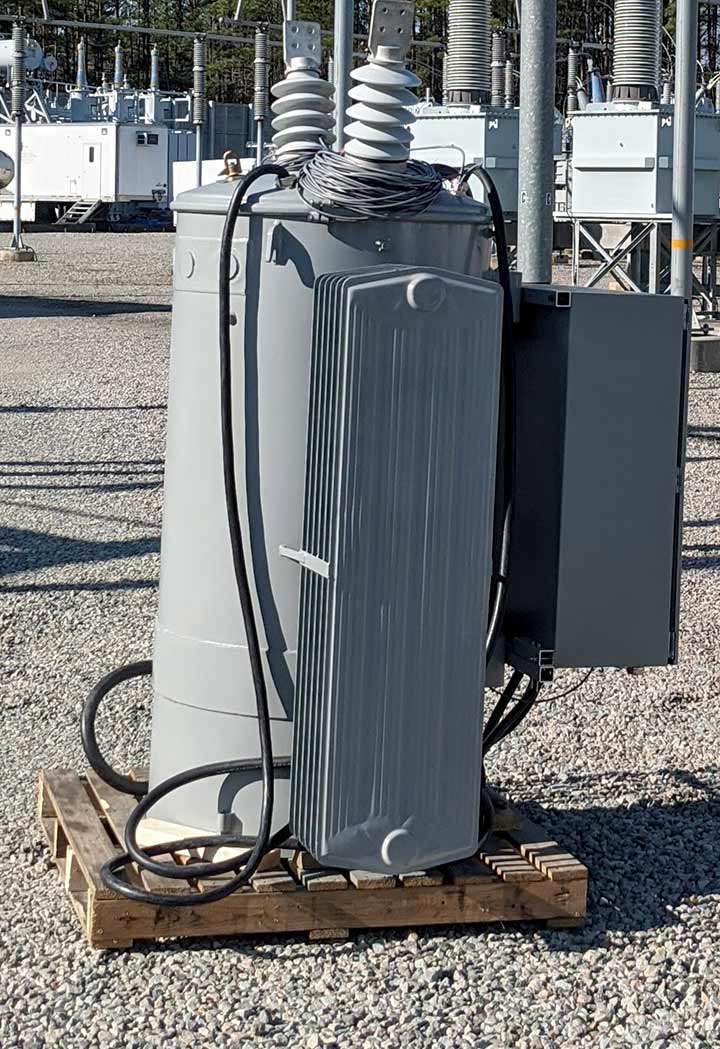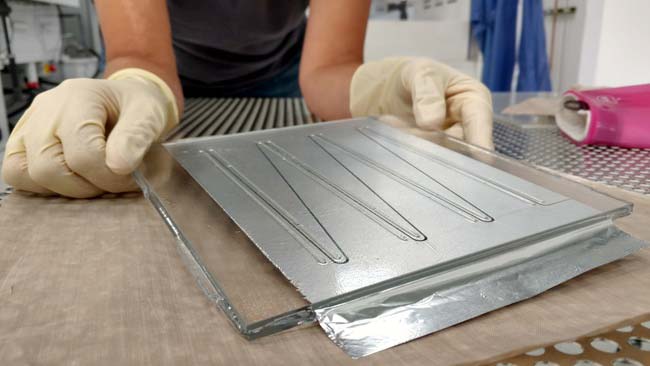Two New Solar Technologies Emerge through Solar Prize Round 2
It was a year in the making to get to the final event of the American-Made Solar Prize Round 2.
As the virtual curtains opened to reveal the two winners on Aug. 28, teams from around the nation were watching anxiously from home. When Resilient Power Systems, a company from Georgetown, Texas, led by father-son duo Tom and Josh Keister, was revealed as the first winner, the hopes of the nine other teams waiting to hear their names were cut in half.
“All kinds of emotions just went through me,” said Tom Keister of Resilient Power Systems.
Moments later, the curtains revealed the second team—SunFlex Solar’s name printed on a $500,000 check.
“It was a rollercoaster, not being announced first,” said Zachary Holman, a co-founder of SunFlex Solar. “I went from excitedness, to giddiness, to being flustered.”
A day earlier, both teams were responding to questions from a panel of industry leaders in the final step of the American-Made Solar Prize Round 2. Each round of the competition awards $3 million in cash prizes to technologies that will increase U.S. solar manufacturing competitiveness. Following an extensive, three-contest competition, Teams Resilient Power Systems and SunFlex Solar emerged as the final Round 2 winners, defeating eight other finalist teams. For their efforts, the winners each took home $500,000 in cash and $75,000 in technical support vouchers to pursue their prototypes and continue impacting industry.

A Program To Accelerate Pivotal Technologies
The strategy of the U.S. Department of Energy’s (DOE’s) American-Made Solar Prize is to quickly identify and accelerate pivotal technologies. The Solar Prize, which is administered by the National Renewable Energy Laboratory, is the flagship for a variety of American-Made Challenges hosted by DOE.
Considering the rapid pace of the prize, and the extent of support from organizations across government and industry, the prize operates as a supercharged incubator for startups. And the innovations are continuous; Round 3 is already underway, and Round 4 is open for competitors until Oct. 8, 2020.
For the 20 initial semifinalist teams, participation alone guarantees access to resources that can make the difference in achieving commercial viability. The cash prizes, as well as the availability of state-of-the-art lab capabilities, help jumpstart the technologies even without winning the competition. Compared to traditional research grants, the American-Made Solar Prize is more suited to the needs of startups by providing flexible funding, an emphasis on commercialization, and focused technical support to enable companies to overcome early-stage innovation costs.
“Through the American-Made Solar Prize, we discovered the brilliance of DOE’s design for the program,” Josh Keister said. “It is a success for all pilots and participants. Technologically, we were really strong before. But this program has made our business and financial future more secure than ever.”
A New Route for Power Management

Resilient Power Systems’ winning technology is a power router for utility-scale interconnection of renewable assets, such as solar, battery storage, wind turbines, electrolyzers, and more. The routing module is a plug-and-play, grid-ready solution for efficient and reliable power management, whether in microgrids or large utility applications. Their technology is set to overcome solar project delays with a cost-effective alternative to traditional utility transformers.
“We want to correct—instead of create—problems for the grid,” Keister said. “We want solar farms to be assets instead of liabilities. With that in mind, we made a common power module that could drive a large number of applications; a product that could be manufactured at the right price and survive on the grid.”
For Keister, the Solar Prize advanced not only his company’s product, but the entire business as well.
“The format of the challenge encourages teams to present the entire business case, beyond just an impressive technology. The [expert reviewers] especially helped us communicate more efficiently,” Keister said.
Keister plans to use the prize funds to further pursue validations of Resilient Power Systems’ module on diverse systems with industry partners.
Using Aluminum To Lower Cost-Per-Watt
SunFlex Solar was chosen for its breakthrough manufacturing method in fabricating high-efficiency back-contact solar cells. The team’s innovation swaps comparatively expensive metals such as copper with aluminum foil and integrates the aluminum in a way that preserves the stability of the cells. SunFlex Solar has demonstrated that the cost-per-watt of their innovation is lower than competitive back-contact modules, at a higher efficiency than current consumer solar modules.

The award and prize funds are a windfall for the team, which has participated in multiple tech-to-market programs and has strived for an opportunity to advance their innovation. “Winning this competition is a huge enabler; it’s the funding that we need at exactly the right time,” Holman said.
The team already has a module manufacturing partner lined up, which will help scale their modules and show that the modules pass industry reliability tests. The prize funds will help SunFlex Solar “put our heads down and execute, and to realize manufacturing with our partners,” Holman said.
Prior to the competition, the team had spent three years trying to scale from solar cells to solar modules, learning how to connect aluminum to the cells and pass testing. Within the competition, the team spent three months combining insights to achieve a manufacturing solution.
“Three months is not a lot of time, and it goes way faster than you expected. The deadlines help you push further than you expect,” said SunFlex Solar Co-founder Kate Fisher.
Advancing Tomorrow’s Solar Solutions
Both teams progressed through increasingly competitive stages, advancing their concepts in cooperation with industry and the national laboratories. Technical support vouchers are awarded throughout the competition, allowing teams to access world-class research and development infrastructure that can make the difference in demonstrating the viability of their product.
Through the Solar Prize and other American-Made Challenges, DOE targets opportunities to shift funds from scaling legacy technology to inventing tomorrow’s solutions.
If you and your team have a solar technology that could transform the U.S. energy industry, bring your best ideas to Round 4—registration is open until Oct. 8 for new competitors.
Last Updated May 28, 2025
